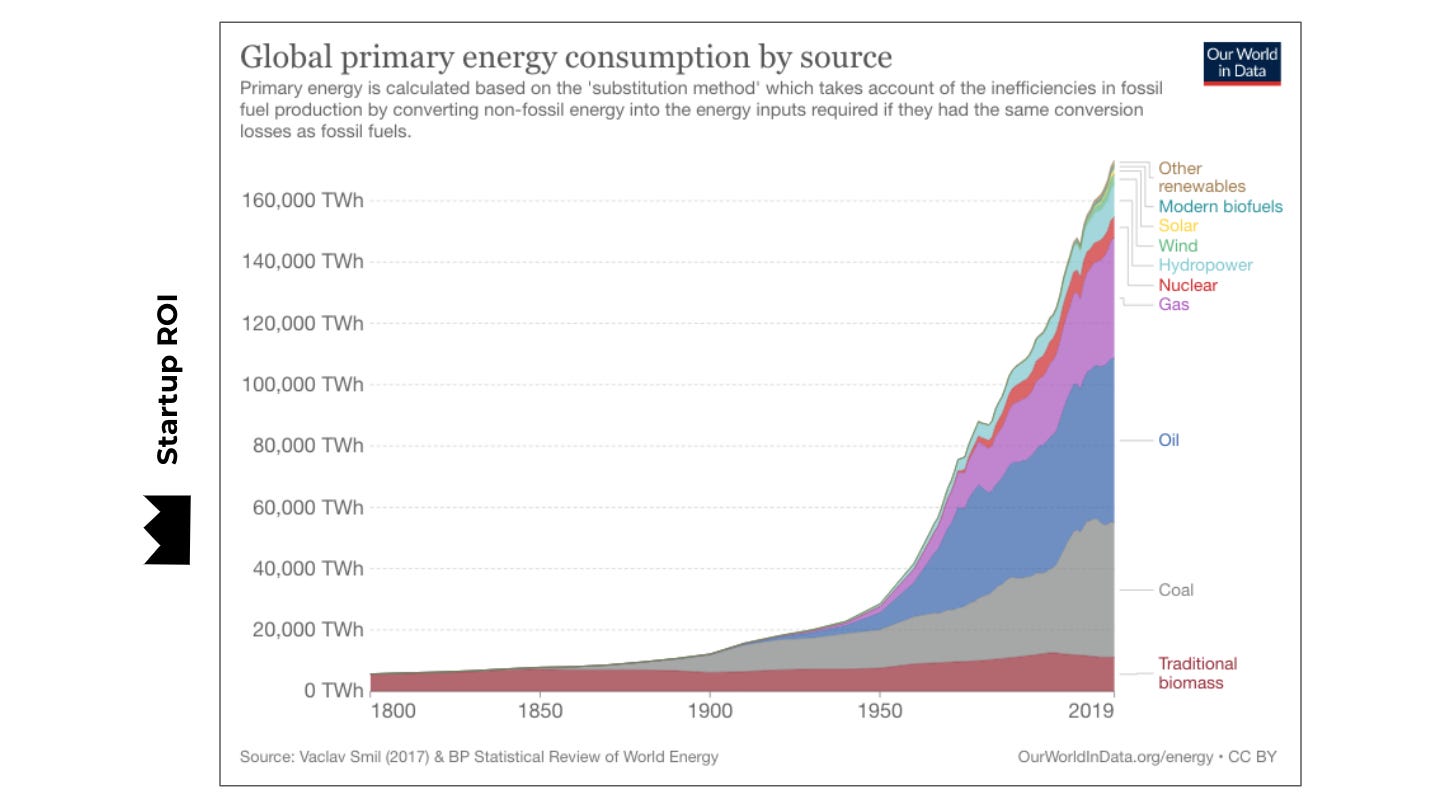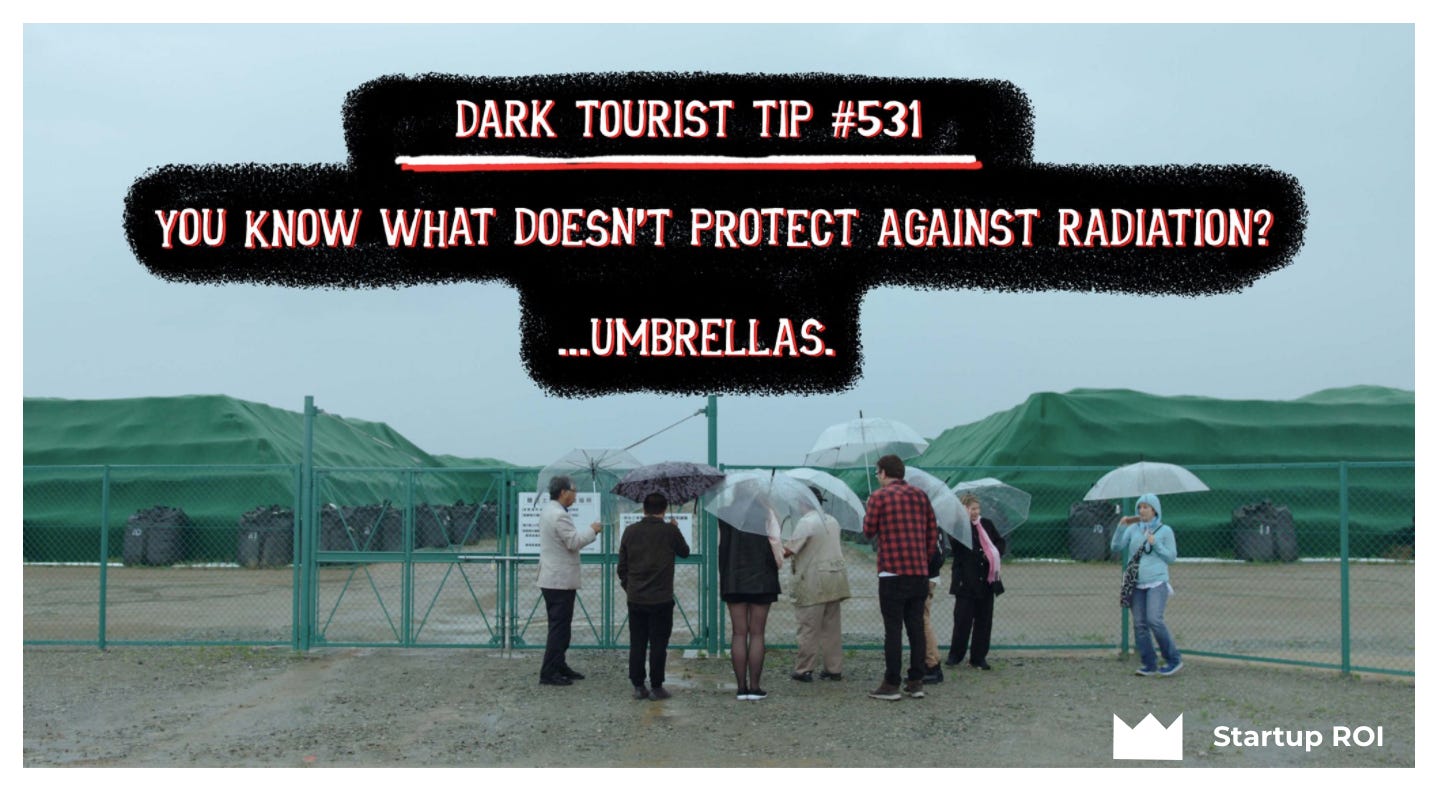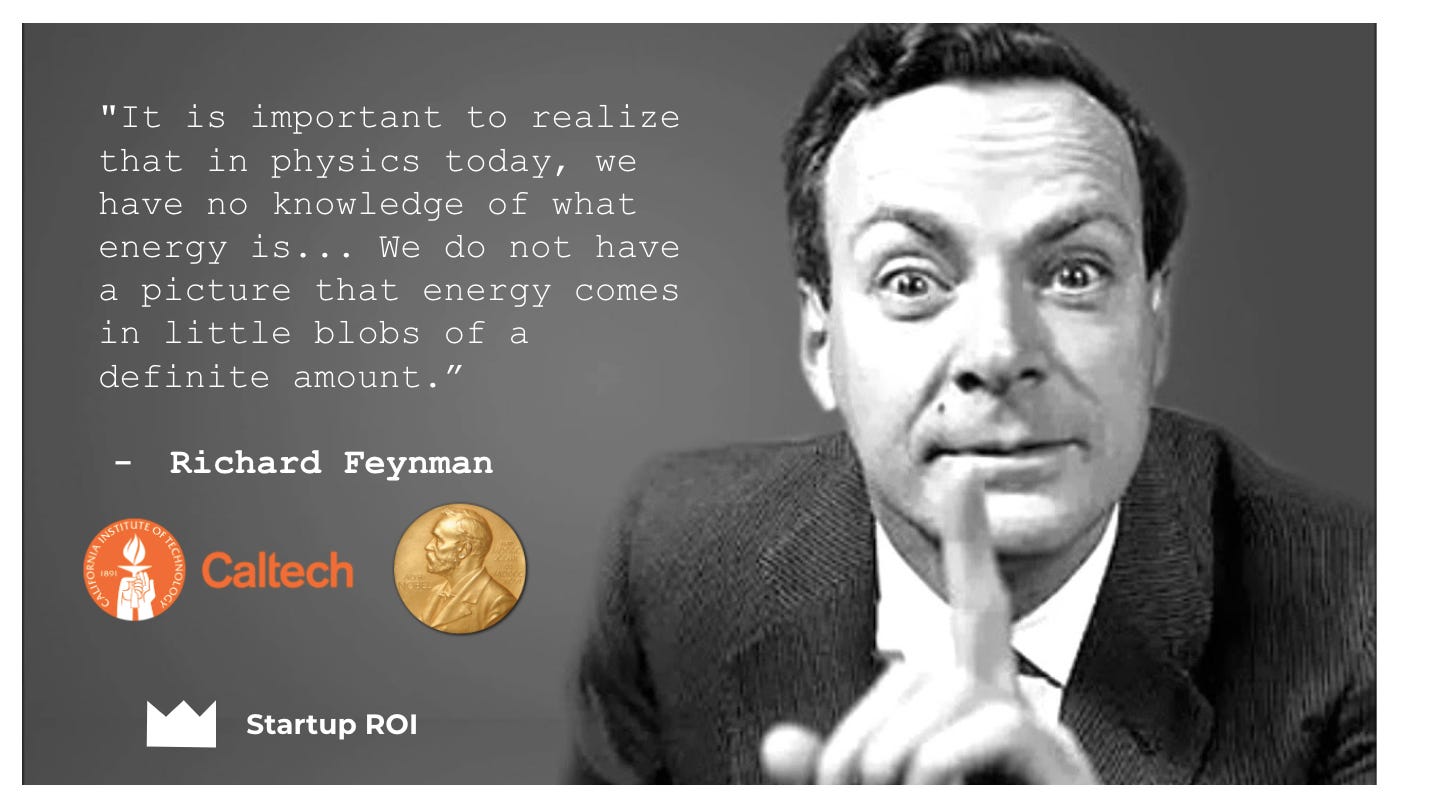Welcome to Startup ROI, where we explore global technology trends and how they manifest themselves in France 🇫🇷 . Whether you're an entrepreneur, investor or tech enthusiast, I'm glad to have you here! 📩 Get in touch
📌 If you are a startup interested in being featured or a VC interested in collaborating, please reach out directly: bonjour@startup-roi.com
Ahem! 🎧 Listen to the audio version:
New here? Subscribe to get Startup ROI each Tuesday:
Introduction: France 2030
Just last week, President Macron launched his France 2030 campaign to the public. With an election around the corner, it's natural to expect the president to put forth a vision for the future. But this announcement felt like sweeping, non-partisan generational reform as opposed to the policy squabbles we're accustomed to in modern politics. The 5-year, €30B investment strategy reinforces the technology-first mindset previously demonstrated by the President while bringing hard science and big industry into the fold that was previously reserved for les startups. Here is a summary of the 10 Objectives. First up, and today's subject, reinventing nuclear power.

The Questions We Will Ask Today
Nuclear energy has been around for quite some time, so why are there varying levels of adoption across the globe?
Why is France an early adopter and current global leader in nuclear energy production?
Why has innovation and broader adoption stalled out after achieving economies of scale?
How and at what cost did nuclear energy develop a spotty public reputation?
Why is Macron planning to invest €1B into innovation around small, modular reactors and safer waste storage as opposed to other forms of renewable energy?
If the plan isn't carried out, do we run the risk of missing a surefire opportunity to avoid environmental calamity?
What do we stand to gain if these investments stimulate innovation at scale?
The Perpetual Motion Machine
Oh ye seekers after perpetual motion, how many vain chimeras have you pursued? Go and take your place with the alchemists.
— Leonardo da Vinci, 1494
Since the Middle Ages, inventors, proto-scientists and hucksters have sought to create a perpetual motion machine: a hypothetical system that could work infinitely without an external energy source. The thought of it evokes old-timey, bizarre inventions like the "capillary action water pump" or "the overbalanced wheel" that hope to bend the laws of physics to achieve the unachievable: an unlimited source of energy. Despite the fact that modern physics brought us the first and second law of thermodynamics -- which unequivocally disproves this possibility here on Earth, at least -- people still make futile attempts to create such a device.

Though we never built a perpetual motion machine, we did advance in areas of general energy production. The Industrial Age brought us mechanical marvels and combustible fuel, the Atomic Age inspired awe and fear in human civilization's' raw power of innovation and the Digital Age has drastically increased our personal energy consumption per capita. Despite much progress, we rely quite heavily on our original sources of energy, fossil fuels, to power modern society. So much so that we are witnessing first-hand the environmental devastation it wreaks. Nevertheless, it's been a terribly slow transition to cleaner energy sources.
There is, however, a silver bullet on the horizon: nuclear fusion. One might call it the perpetual motion machine of the past century. Every decade leading scientists vouch for the fact that we're just 30 years out from a commercial application. This moving the goalposts business has been going on for so long it's basically a meme within the nuclear physics community.
You might be thinking to yourself: wait a second, I'm pretty sure that nuclear energy already exists! And you'd be right. But there's a critical distinction between nuclear fission and fusion. The former is what generates power at the facility Homer Simpson works for in Springfield; the latter is a work of science fiction that we're getting closer to on the daily. One such company that is driving towards this future is Renaissance Fusion, a French deep-tech company looking to bring nuclear fusion to market. Soon we'll get into the details on how exactly it works (think of it like Nuclear Physics for Dummies, hosted by me, your dummy teacher) but before we do, I'd like to review a brief history of nuclear energy to illustrate why France is so poised to lead the charge in this very domain.
Enriched History
I would be remiss to discuss French nuclear innovation and leave out two key scientific figures who also happened to discover radioactivity. Marie Curie and Henri Becqeurel (along with Pierre Curie, Marie's husband) were awarded the the Nobel Prize in Physics in 1903 for their discovery. Fun facts: Marie named the first chemical element she discovered, Polonium, after her mother country of Poland and Becquerel (Bq) is literally a unit of measurement for radioactivity. Absolute legends! There's a lot of history between their discoveries and the commercialization of nuclear energy, but I can't help but think that France's current nuclear policy, which we are about to see is comparatively advanced, is tied to their proud scientific history in the discipline. Conjecture aside, let's take a look at why nuclear energy in France is so significant.
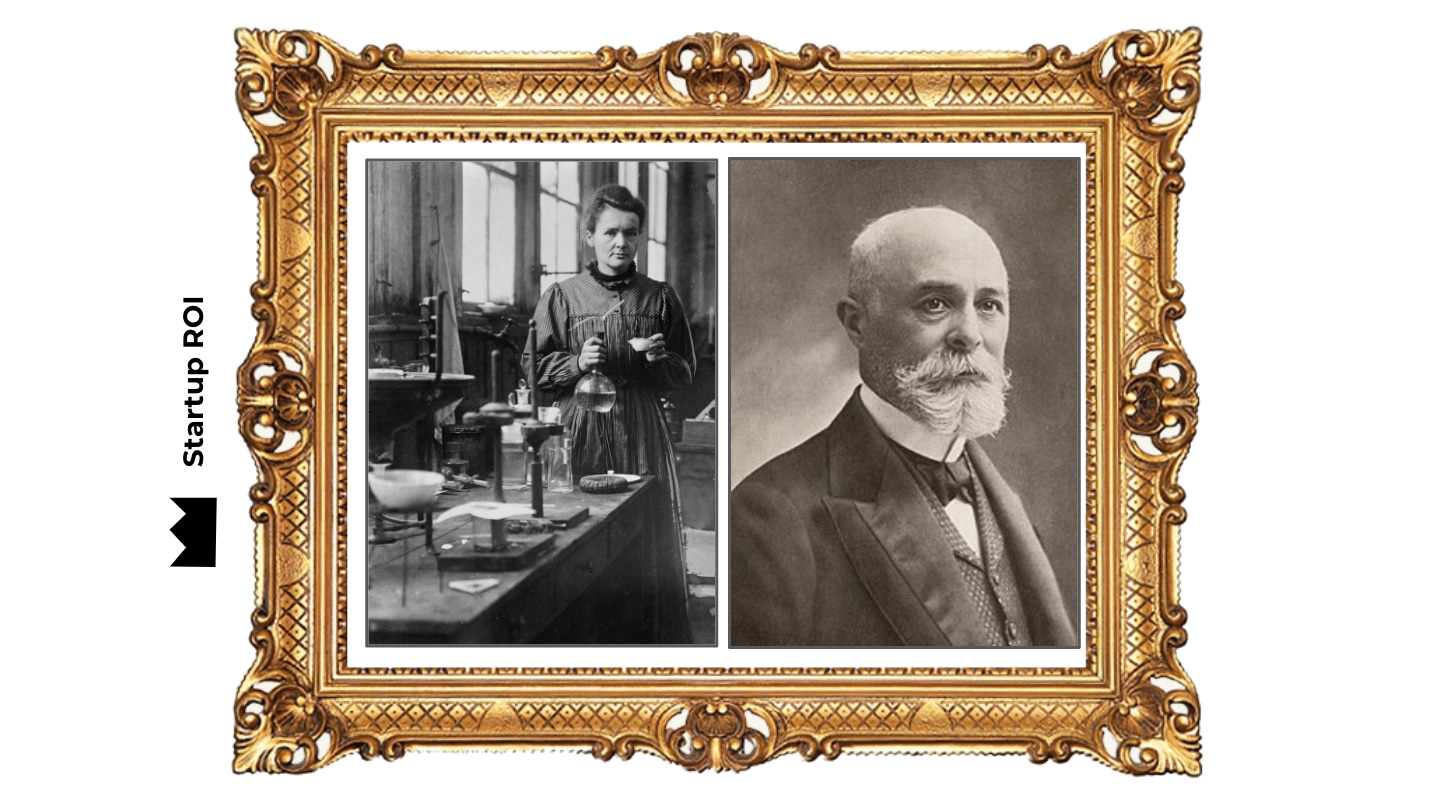
You can draw a fairly straight line from the discovery of radioactivity to the Manhattan Project (and the subsequent bombings of Hiroshima and Nagasaki). When the world witnessed the sheer power of splitting an atom it became clear fairly quickly that it was a force that should never again be unleashed. But if there was ever a silver lining to the mushroom cloud of atomic destruction, it was the R&D spent to harness that energy for constructive purposes. As it turns out, instead of leveling an entire city, you can leverage that same atomic force to produce abundant, cheap, low-carbon energy. So while nuclear proliferation took place in top secret military projects worldwide, the scientific community was in a race to achieve nuclear energy facilities at scale and reasonable cost.
The chart above illustrates where countries allocated resources towards carbon-free electricity sources during the decade of peak scale-up. You'll notice that France was fairly early to the game and all-in on nuclear energy. Meanwhile, the US' greatest attempt to switch towards renewables didn't take place until the early 2000's with a focus on solar and wind power. It's a pretty pathetic effort considering California, a single state, made nearly the same contribution per capita. This head start, combined with a significant bet on nuclear energy has put France at a competitive advantage. Today, as depicted in the graphic below, they have the highest share of electricity generation from nuclear sources, hovering at around 70% of total.
Globally, however, we appear to have difficulty reaching consensus on the best route to carbon neutral energy due to various political and economic forces. Wind, solar and other renewables have made a recent comeback as potential saviors for the imminent environmental disaster and I have no doubt that they will play a part in rectifying our precarious position. But even some of the die-hard "anti-nuclear" leaders have come around to the fact that swift and radical change cannot be implemented without nuclear energy. If you look again at the chart below, you'll see a comparison between France and Germany, both of whom are major proponents for green energy. Despite the fact that Germany has invested heavily in renewable energy, their carbon intensity score is 10x that of France. Not to mention that the cost of electricity is about 2x that of France.

You don't need to be a nuclear physicist to see the common denominator here. But then you might ask yourself, why aren't we going hard into nuclear energy if it's such a game-changer? I would argue there are three core impediments:
Legitimate concerns around health, safety, and cost of capital
Bad PR
Lack of Innovation
#1 Health Safety & Cost of Capital
These babies are expensive. A nuclear power plant costs billions, takes around a decade to build and takes nearly two decades to see a return on capital. While they've proven profitable, they are risky undertakings that require a public/private partnership and precision engineering. In addition, nuclear reactors pose inherent risks. For the most part, we have this under control so that people working at nuclear facilities or those downstream of one aren't getting sick. No matter the precautions, high profile accidents happen, and they leave an indelible impression on the public.
#2 Bad PR
Catastrophes like Chernobyl and Fukushima are absolutely tragic. Without diminishing the experience of those impacted, proportionally the damage is limited. In fact, there have been studies conducted to show those who were exposed to radiation have seen little to no adverse effects as a result of the exposure. Regardless, when you think "nuclear" you think of weapons, waste and weird mutations.

#3 Lack of Innovation
The bulk of innovation and implementation of major nuclear energy facilities was done in the 1980s and due to the high capital costs, long time horizons and apparent risk, it didn't get a ton of attention from innovators in the public or private sectors. Sure, we achieved economies of scale but we've reached a plateau that demands the attention of creative physicists and cooperative governments.
What do you think so far? (click emoji to vote)
😍🤯😴😡👍👎
This brings us full circle to Macron's major announcement on new investments in the nuclear energy sector. By 2025, nearly a quarter of the world's nuclear energy capacity will be stopped due to aging power plants. Simultaneously our need for abundant, clean energy is skyrocketing. You might recall that it takes around a decade to build a nuclear plant, which means we are already behind schedule. Which is why the idea of very small nuclear reactors is appealing. They are faster and easier to build, you can stitch multiple reactors together to work in tandem and they are much safer since there isn't a single point of failure. Akin to computer chips, nuclear reactors will get smaller, more powerful and smarter over time. Not to mention they can backfill the existing facilities that would otherwise sit fallow and collect dust.

This is the type of near-term innovation that Macron hopes to accelerate. But surrounding renewed interest, de-risked projects and a climate of patient investors the chimera of nuclear fusion has returned to the mainstream.
***Editor's Note: France is host to ITER an international project on nuclear fusion research, the renewed interest in nuclear fusion I'm highlighting is in the private sector, something previously deemed too expensive and complex to tackle without government involvement
Feelin' HOT HOT HOT
To simplify things, nuclear fission obtains energy by splitting an atom; nuclear fusion releases energy by merging atoms together. The former is essentially a controlled explosion, a chain-reaction of neutrons colliding with atoms that expel neutrons that collide with atoms, the energy of which is converted into electricity; the latter is identical to the process that takes place on the Sun. The reason it's so hard to replicate here on Earth is because (a) the sun is hot AF and (b) it's massive gravitational pull also contributes to the process. For the process to work here on Earth, we'll have to figure out a way to reach temperatures of 100M degrees Celsius (roughly 7x the temperature at the core of the Sun)!
In the 1950s, Russian scientists came up with the idea for a system that might be able to produce the necessary conditions. It's called a Tokamak (or as I like to call it, a Plasma Donut). It's a device with an incredibly powerful magnetic field used to confine plasma in the shape of a torus (math for donut). Scientists have been able to prove it works, the only problem is it takes more energy than it puts out. Cool proof of concept, but not commercially viable. Since then, engineers and physicists have developed variations on the model that serve as leading contenders for the very first commercially viable fusion reactor.
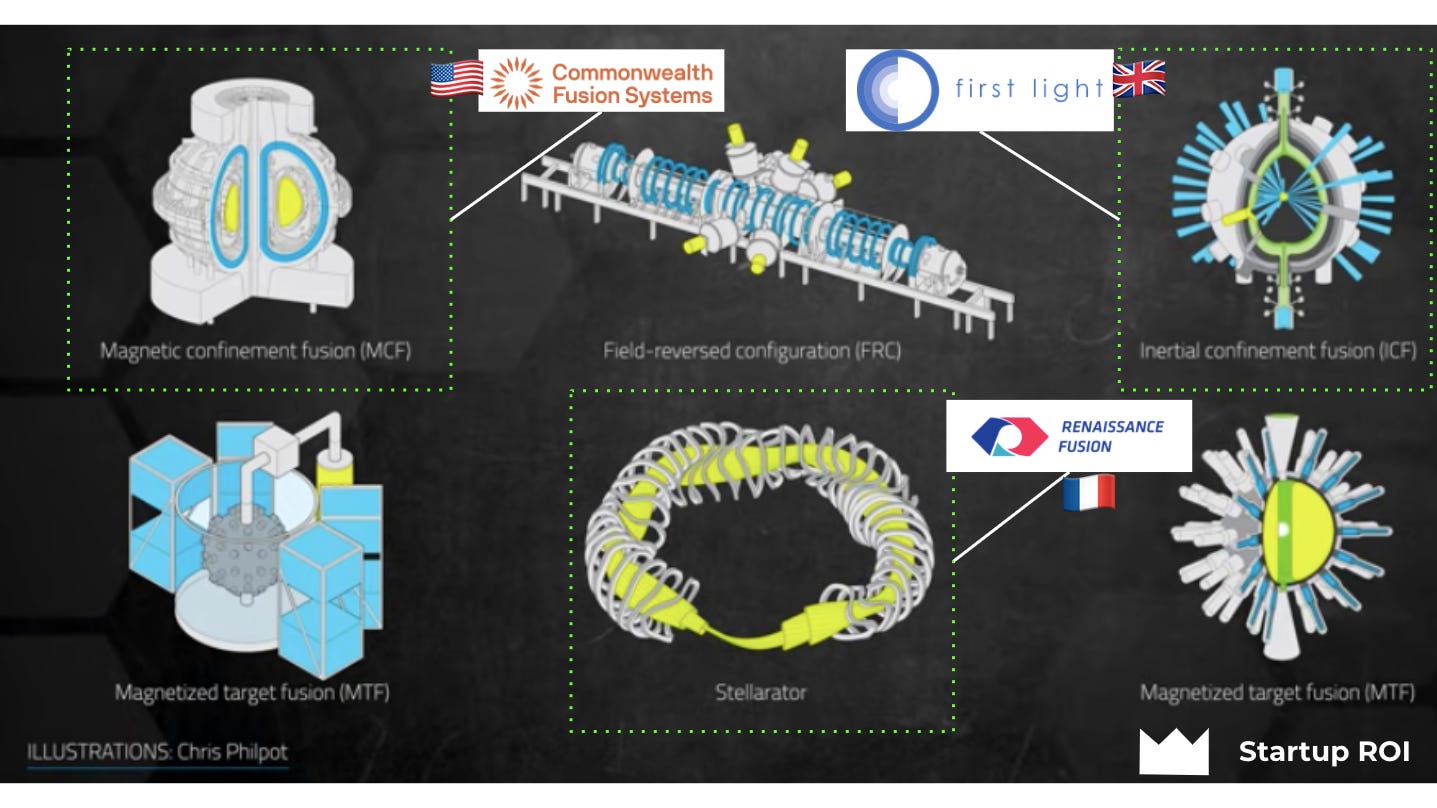
Renaissance Fusion, a French company, has selected the "Stellarator" as their model of choice. If name alone determined the outcome, my money would be on them. Through innovation in High Temperature Superconductor (HTS) manufacturing, Renaissance Fusion aims to build the very first Stellarator with "thick, flowing metal walls" and bring fusion energy on the grid within 13 years.
We are approaching a critical intersection of collective fear of climate disaster, improvements in software modeling & AI/ML and enormous risk tolerance from the capital markets. As a result, we may just be on the precipice of transformative technological change.
Conclusion: Energy Blobs
So what do we stand to gain with the proposed nuclear innovation? Cheaper, safer and more abundant energy at minimal cost to our planet. Even better, this push for innovation may lead to the elusive — and ever-promised — delivery of fusion reactors for a truly sustainable and unlimited source of power. It appears to be just over the horizon: whether that's 30 days or 30 more years remains to be seen!
The objectives laid out in Macron's plan serve as a roadmap for technological innovation into the next decade that will help power France's 21st century economy, work to prevent environmental calamity and enable energy independence and sovereignty into the foreseeable future. For that reason, I've decided to start a 10-part series aligned with the aforementioned objectives to explore these imperatives deemed invaluable by the administration. This is the first of ten that will be interspersed between regular programming (and will be demarcated in the cover image with the French 2030 logo). In my early research I've found the science, technology and strategy particularly fascinating, an impressive fusion of French innovation culture we've covered here.







